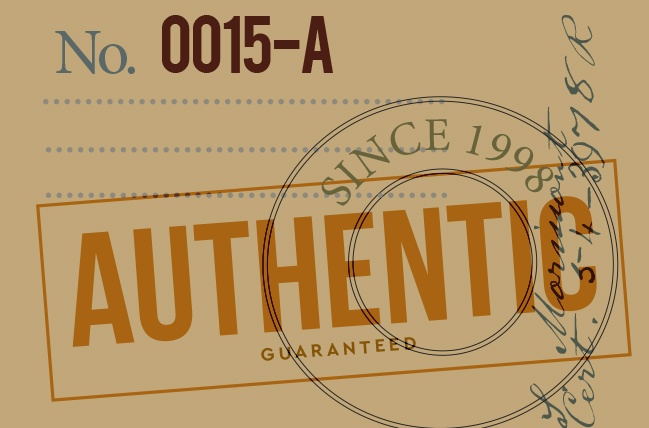Branding
Design
Authenticity in brand experience design
In today’s hyper-connected world, news travels around the globe in nanoseconds. Privacy is an illusion. Word-of-mouth no longer requires in-person encounters or that you even know the person. And we as people, and brands, can no longer hide from who we truly are.
Authenticity has always been at the heart of all great brands. And revealing and defining your brand’s essence, or fundamental character, is where it all starts. From there you can create, shape, visualize and develop the tools you need to express and manage your brand in order to enable a customer experience that reflects your desired reality.
You might think, yes, I know this. But, you’d be amazed at how many times we encounter brands that stray from their authentic selves. In theory, it’s easy to be authentic. In practice though, it’s much harder. Especially when the channels through which brands are experienced continue to multiply and the people that manage those brands keep changing. And let’s not forget the people that deliver the brand experience. They matter. A lot.
So, what does authenticity look like? First, it means delivering what you say you’ll deliver. If you’re offering a service and promoting it, then you should be able to deliver it. This seems like it doesn’t even need to be said, right? But, on more than one occasion we’ve encountered organizations doing the exact opposite. We’ve all heard the expression “fake it till you make it,” but that doesn’t work. Not with today’s demand for increasing transparency. If you’re inauthentic, you’ll lose trust. If your people aren’t delivering an on-brand experience, re-train them.
Second, your branded offerings need to make sense. Seems simple, but we’ve heard companies say they see an opportunity to offer X, Y or Z under a particular brand and it doesn’t fit logically. If you sell athletic wear, can you sell your own proprietary brand of water? Maybe. . . if your brand essence is about enhancing performance and your water offers added value, then, perhaps. But, if your brand is widely known for selling commercial cleaning products, can you launch into the personal care space with that same brand? Probably not. This is where it’s important to understand how your brand is perceived and whether it has the required elasticity that will allow you to enter adjacent markets.
Third, your organization needs to be structured in a way that enables you to deliver the brand experience consistently over time, across channels and geographies, in the way the customer has come to expect, all at the right price. To do this, brands must be supported by an organizational and operational plan that enables a consistent brand experience as opposed to a disjointed one that feels one way via channel A, another via channel B and altogether different when you speak with a person representing the brand. This can be particularly challenging in organizations that are large and/or siloed.
Which brings us to point number four, and one of the most important ones. Your people. Brands, and the people that create, manufacture, market, sell and manage them must have shared values that are aligned with your brand. They are the brand’s personality in human form. Remember the brand personality you drafted as part of your strategy? That should be part of what you’re looking for in your people during the hiring process. For all of you in the B2B world, take just a moment to imagine someone selling adhesives to an aircraft manufacturer. We’re talking about high-strength, specialty adhesives. He or she is talking to design engineers, manufacturing directors and process engineers. The potential dollar figure of this sale is $1 million. The person delivering the brand’s message must be able to understand the engineering mindset, speak the same language and fully understand the technicalities of the brand’s personality or else no sale will ever be made.
Vigilant brand management and consistent brand expression through voice, visual identity and the customer’s experience of the product or service will always be at the cornerstone of building strong brands and authentic experiences. It’s always been this way, and it will never change.
Interested in reading more about brand authenticity? See our identityWise Issue No. 51 on Five Keys to Maintaining a Consistent Brand Voice.

